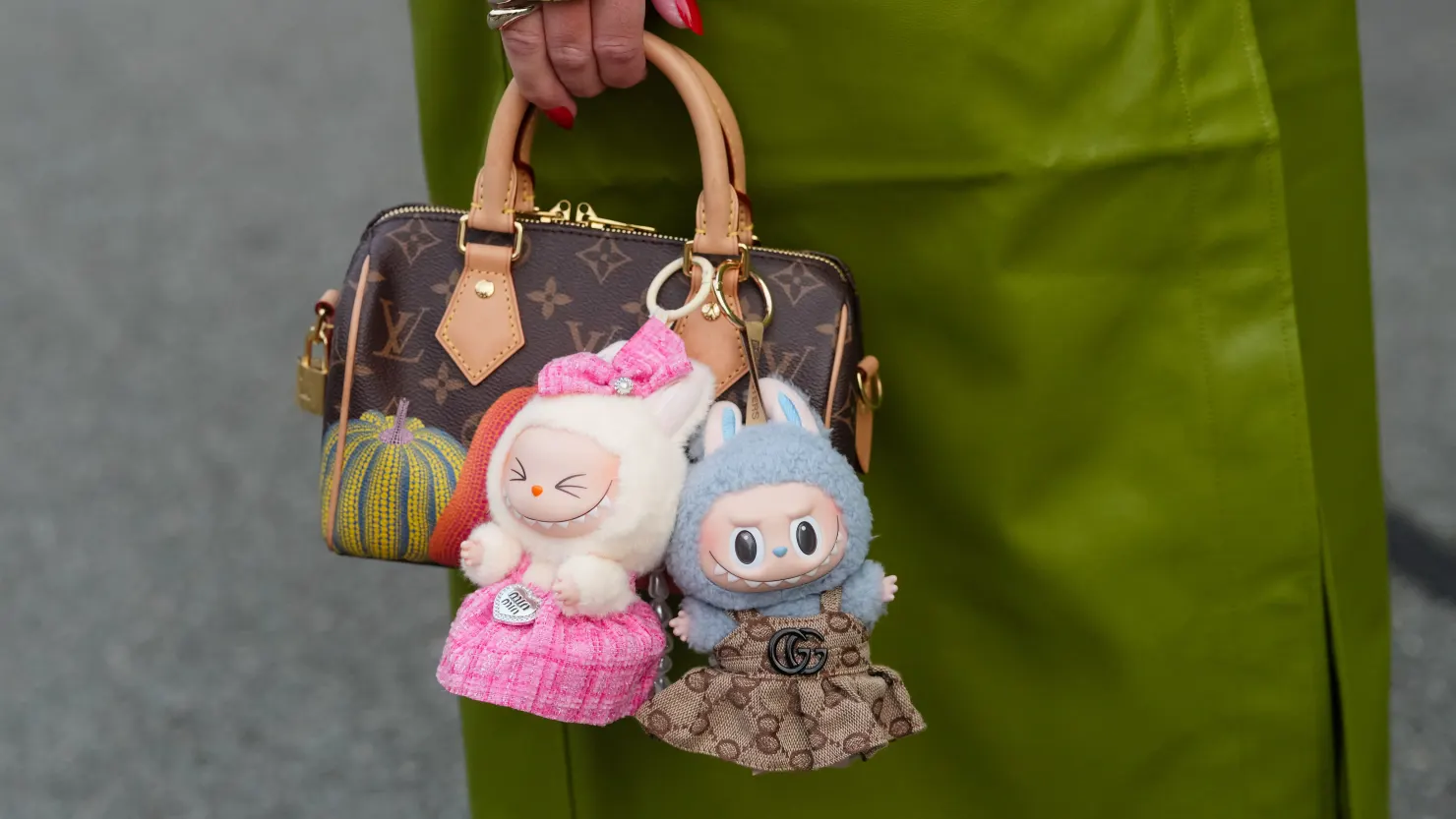Labubu dolls, once seen as quirky collectibles, have quickly become a luxury fashion phenomenon. Celebrities such as Blackpink’s Lisa have been spotted pairing the rabbit-like, jagged-toothed plush toys with Louis Vuitton and Hermès bags, elevating them from $27 blind-box trinkets to sought-after status symbols. On the resale market, prices often soar well above retail, and luxury brands are beginning to test whether fans will embrace Labubu at high-end price points.
In June, a charity auction featuring 14 custom Labubus dressed in outfits by Carhartt and Sacai raised an impressive $337,500, with one piece fetching $31,250. Tennis star Naomi Osaka has also highlighted their appeal, showcasing crystal-covered Labubu “Lablingblings” priced at $500 from New York designer A-Morir. The demand for these embellished versions is so intense that delivery takes four to six weeks.
Next, Parisian luxury house Moynat is preparing to release a capsule collection of handbags, leather goods and bag charms featuring Labubu and other characters created by Hong Kong-Dutch artist Kasing Lung. Launching October 11, the line will roll out boutique by boutique until early 2026, with charms priced at $450 and canvas totes starting at $2,150. The exclusivity mirrors the blind-box thrill, designed to stoke anticipation among collectors.
Luxury brands have increasingly leaned into playful collaborations. Tiffany, Loewe, and Jimmy Choo have all embraced pop-culture icons from Pikachu to Sailor Moon to generate hype and connect with younger consumers. Omega’s “Silver Snoopy” Speedmaster, released in 2015, originally retailed at $7,350 but now trades for nearly $38,000, showing the staying power of these cultural tie-ins. Louis Vuitton has also leaned in with its own “Louis Bear” bag charms to tap into this trend.
Analysts say the strategy resonates with Gen Z, who value identity and emotional connection over traditional craftsmanship. “Cute is not trivial. It is strategic,” explained Jeff Lindquist of Boston Consulting Group. Brands like Moynat see such collaborations as a way to stay relevant while appealing to younger buyers who may not yet invest in classic luxury pieces.
Still, the frenzy comes with risks. Pop Mart, the Chinese company behind Labubu, has seen shares drop 21% since late August on fears of waning demand, though the stock remains up nearly 200% for the year. Experts caution that while collaborations can expand a brand’s audience, trend-driven hype can collapse as quickly as it builds. For now, Labubu’s rise reflects consumers’ craving for joy and innocence amid global uncertainty, suggesting that “cute” may carry more staying power than skeptics expect.
READ MORE:
